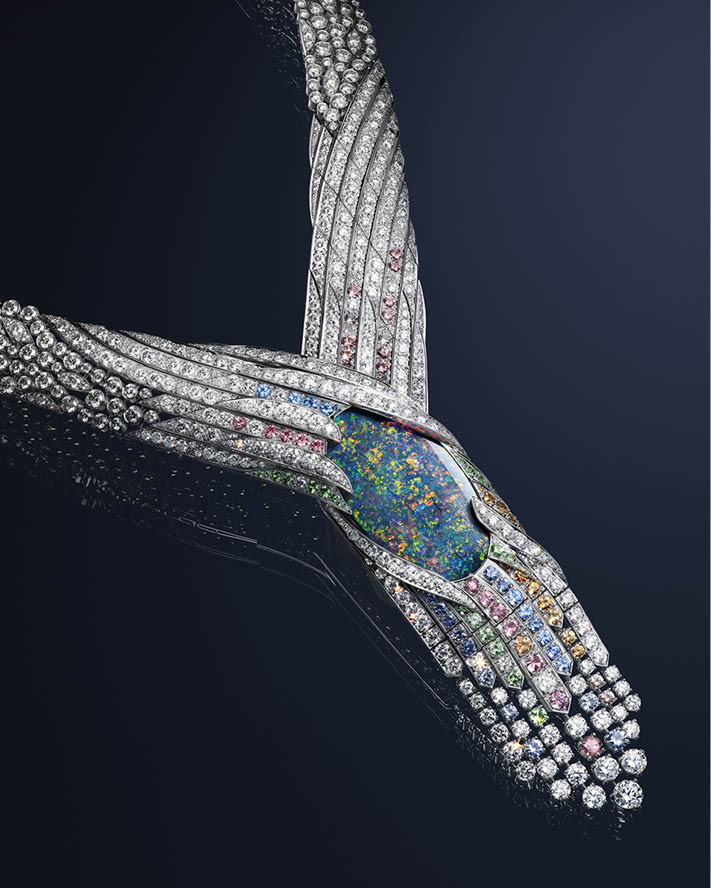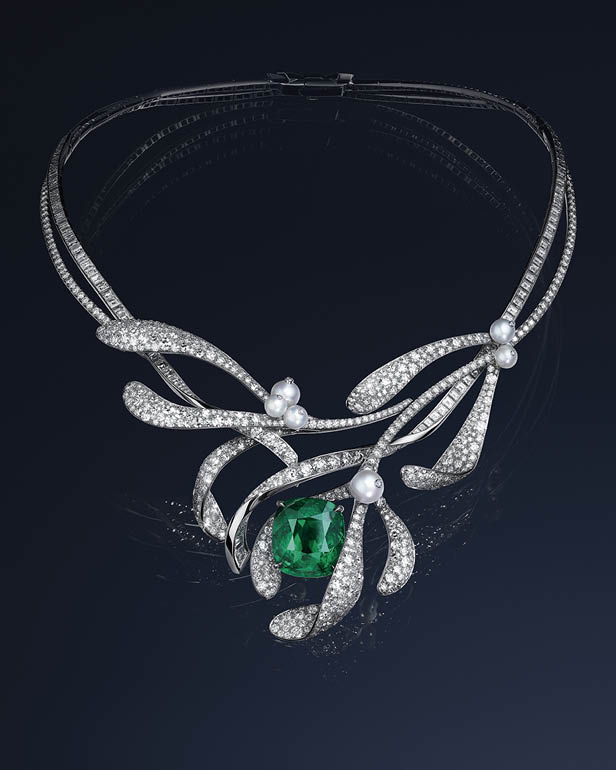Nature has been at the heart of Chaumet’s collections since its founding in 1780. This year’s high jewellery collection Le Jardin de Chaumet, poetically highlights this connection with the natural world, taking you on a journey through beautiful lands, embracing the world’s untouched beauty. The collection sees everyday natural objects – flowers, wheat, vines, leaves – presented in a romantic and enchanting way, using the finest savoir-faire and creativity to bring these beautiful pieces to life. The 68-piece collection undoubtedly posed challenges for the 12 Vendôme workshop, where the Maison’s experts worked tirelessly to achieve these works of art.

Heading up the workshop is Benoît Verhulle, who took on this crucial role in 2017 after working as a jeweller for many years. Verhulle’s role is to support the team that crafts the pieces, ensuring they are brought to life with the best results possible. With the collection one of the brand’s most beautiful yet, we take a deep dive into the savoir-faire and creation process behind the pieces.
Take us through the story and inspiration behind this year’s high jewellery collection.
It’s in Chaumet’s DNA where one finds the natural aspect, the naturalist, nature, and this botanical vision. The goal was that we could immediately recognise and name a plant or flower when looking at our creations. There is also a keen sense of detail to capture this naturalist side. The collection follows the Maison’s esteemed legacy.
What are some of the highlight pieces for you this year?
The Wheat necklace encapsulates a subject dear to the Maison, and we’ve covered it several times before. We brought something new to this collection, something never done before – a necklace with three different worn styles – the yellow gold wheat necklace, the calibrated white gold necklace, and both worn together. The ingenious part of this necklace is that it has a single mechanism for all three versions. The Bark necklace with its stunning opal; for this creation, it’s more about the opal defining the necklace. The Iris necklace has the advantage of dual wear: the husband can wear the brooch, and the wife can wear the necklace. The entire collection features magnificent stones, such as the emeralds in the Mistletoe set. In my opinion, creating this collection was a real joy because it carries many messages and aligns perfectly with the Maison’s DNA, featuring transformable pieces, some more daring designs, and the Pansy choker-like second skin. The Maison’s codes are still present, with the “fil-couteau” technique resembling the Rouen collar.

There is a slight variation with the Chrysanthemum and Magnolia where the gold is textured as seen in the Golden Age exhibition, with a very metallic aspect and modernity with the Empress cut. As for the Fern set, it is simple and effective, with small stones but a lot of technique: three large articulated Fern leaves.
Tell us about some of the savoir-faire processes used in this collection.
The “fil-couteau” technique and pave setting with 8×8 diamonds (Wheat, Mistletoe, Pansy,…) On the figurative parts of the jewellery, the gold has been worked on, and sculpted, and is less mechanised.
What about the choice of stones?
During their travels, our stone buyers look for the most exciting stones for the Maison, and then we build collections around these stones.
Tell us about the creation process from the sketch to the final piece.
We begin with a drawing, sometimes a shape, that inspires us to begin imagining what they desire. Then, it’s up to us to run various tests and find the best jeweller for this collection. The designer is always open to suggestions and expects us to make them. The primary goal is to find the aesthetic; multiple possibilities can emerge depending on the craftsman. We continue to exchange ideas with the studio until the piece is finalised.
How do you ensure the process runs according to time and that the final piece reflects the initial vision?
For each collection and piece, I must select the jewellers, setters, and polishers. We then establish a retro-planning schedule with the project managers, highlighting key moments for each collection: dates for aesthetic validation, validation in white (piece without stones), followed by the paving of the piece, polishing, and final touches.
What are some of the biggest challenges you encountered during the creation process, and how did you overcome them?
We were initially concerned about the Wheat Necklace because it was a very covering and rigid necklace. The aesthetic was established first, followed by technique, flexibility, and movements. The 3-in-1 wearing system with a single clasp presented a technical challenge. Every creation/jewel remains a challenge in terms of finding that extra something that ensures it truly conforms to the Chaumet style.
How important do you believe it is for jewellery to still be handmade today?
It’s our profession, our DNA, and the strength of our workshop. There’s always a manual aspect. With 3D design, the jeweller forms a part of their interpretation, their art; otherwise, it becomes assembly mechanical. Handcrafting is similar to writing a love letter. Do we really want to write a love letter on a computer? It doesn’t have the same sensitivity or soul. It’s also the flaws, the imperfections, that make the jewel unique.

What is Chaumet doing to sustain the atelier for future generations, and how do you educate aspiring artisans?
There are currently four apprentices in the workshop. It’s a profession where experience and dedication are crucial. We select our apprentices based on their sensitivity and then train them by sharing our expertise. The objective is to push them even further, to allow them to develop in areas where they may be less comfortable. When you can convey your passion, you can push people even further in their work.
How much does Chaumet get inspired by its archival pieces for new designs?
All the time we are fortunate to have an archive stock of about 600,000 drawings. We draw a lot of inspiration from what our predecessors did. In fact, there are still so many things in our archives that amaze us, like the pieces from the “Golden Age” (Un Age d’Or) exhibition. The Wheat Tiara from 1800 versus the latest Wheat Tiara in 2023: there’s a world of difference between the two, but we have the same subject and a way of doing things that remains similar and consistent. Our heritage is also our testimony to what happened in the world in a specific era.
What is the professional motto you live by?
Never be satisfied, always in anticipation of challenging myself. I always look forward to the next collection to always see what’s next.

When and how did your passion for jewellery begin?
I discovered jewellery at the age of 12 while walking the streets of Toulouse when I saw an artisan working in his shop. I was glued to the window; I told my mother: this is what I want to do. It stayed with me; I was lucky that my parents supported me and helped me to do a Certificate of Professional Aptitude (CAP) in Art and Techniques of Jewellery. And since then, the years have just flown by. It’s truly a profession of passion. We are fortunate; we bring objects to life. And now, I have this role of passing on, transmitting not only the craftsmanship but also my passion.
What is a message you would send to our readers about this collection?
Transmission is not only the savoir-faire but also the values of the Maison. Having the naturalist jeweller aspect, reflects tradition and modernity.
How would you describe this collection in one word?
Naturalist.















